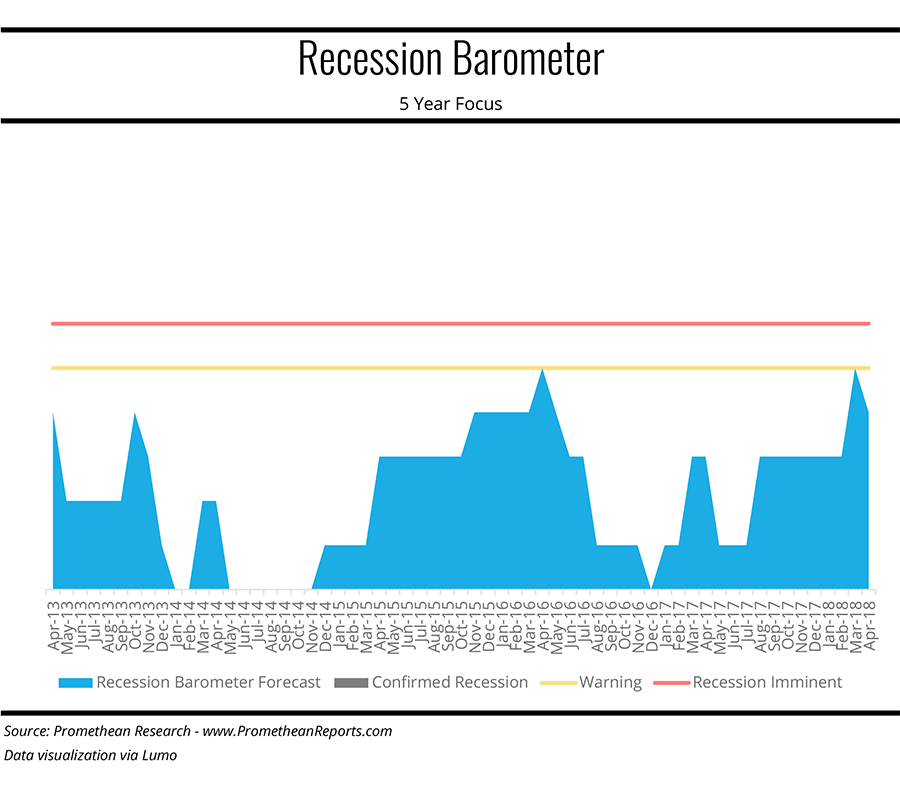What would cause us to become concerned about the economy going forward with those positive data points? First, the Federal Reserve has not had a great history with interest rate increases, over tightening which has led to recessions. Since the late 1970s, the Federal Reserve has gone through eight rate hike cycles, with five leading to recessions (and the current rate cycle has not been determined). Next, the U.S. Treasury yield curve has flattened with only 35bps separating the 2-year and the 10-year yields. Reviewing past cycles, when the spread of 10-year and 2-year is negative, then a recession is likely and has precluded each recession since the late 1970’s. The larger the spread, the more optimistic the market is for economic growth. In the mid-cycle slowdown during the mid-90s, the yield curve flattened to 34bps between the 10-year and 2-year before widening and having other six years of economic growth.






